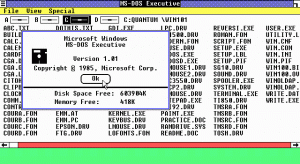 The Cray-2 vector supercomputer was released in 1985 and was the successor to the Cray XMP by Cray Research. At the time of its release it was the fastest computer in the world, bumping the XMP off the top spot. It was capable of 1.9 GFLOPS. The first Cray-2 had more physical memory than all previous Cray machines.
The Cray-2 vector supercomputer was released in 1985 and was the successor to the Cray XMP by Cray Research. At the time of its release it was the fastest computer in the world, bumping the XMP off the top spot. It was capable of 1.9 GFLOPS. The first Cray-2 had more physical memory than all previous Cray machines.
Mainly developed for the U.S. Department of Defense and the Department of Energy, it was used for nuclear weapons research and oceanographic development. It was also used by NASA and several universities. Due to the use of liquid cooling, the Cray-2 was given the nickname “Bubbles”. The Cray-2 was later replaced by the Cray X1.







